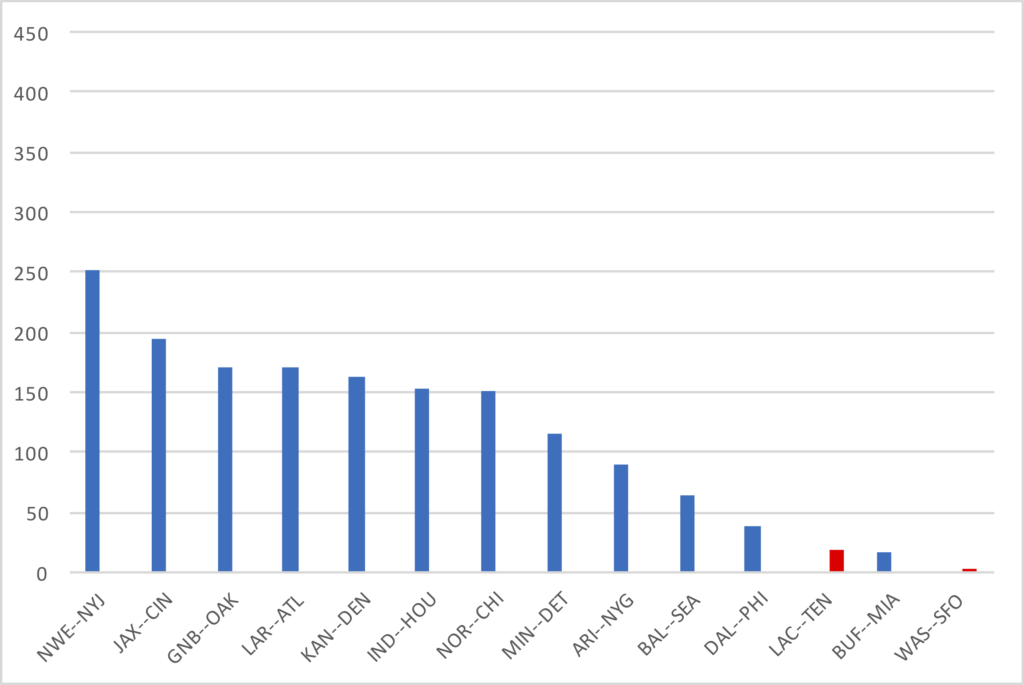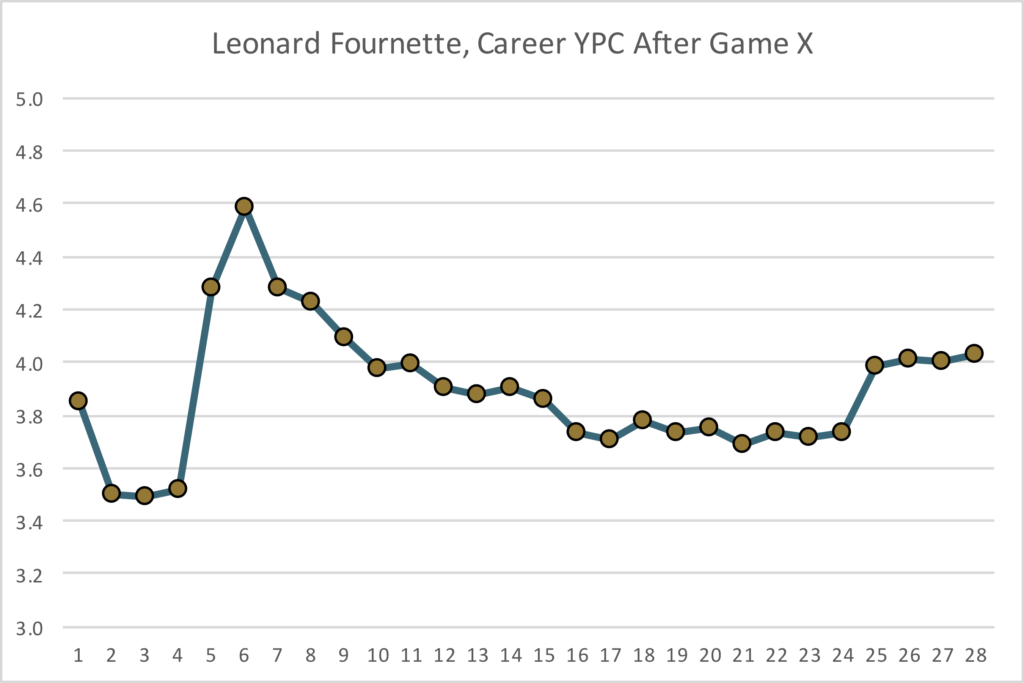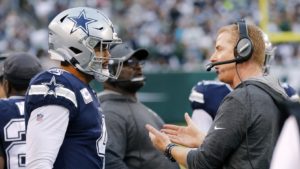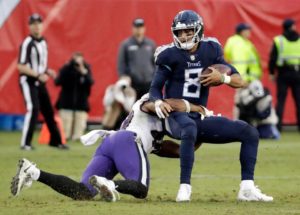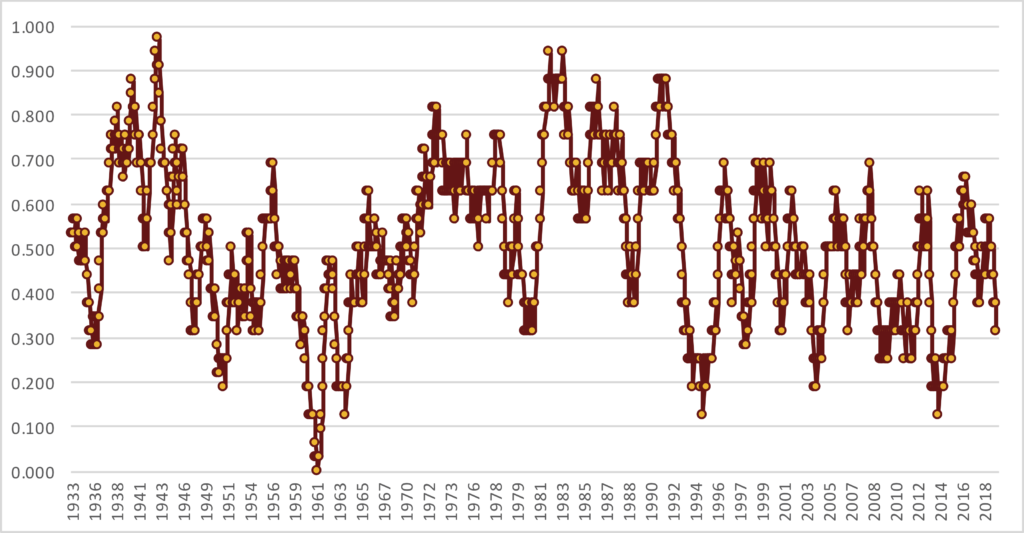You probably don’t think much about Vince Young these days, but I wrote a bit about him this summer. One thing that stood out to me about Young’s career was that for a running quarterback, he didn’t take many sacks. There are 20 quarterbacks since 1970 to rush for 1,000 yards and average at least 20 rushing yards per game in their careers; Young (5.98%) and Steve McNair (5.29%) are the only two quarterbacks with a sack rate below 6.5%.
Young’s best sack season was 2009, when he had just 9 sacks. Young actually finished with more rush attempts (55) than sack yards lost (36), which seemed basically impossible. Young remains the only player since at least 1970 to accomplish that fact, among quarterbacks with enough pass attempts to qualify for the passing title.
For his career, Young had 3.4 rush attempts for every sack, which is outstanding and the best mark among quarterbacks with at least 500 pass attempts (Tim Tebow was at 4.8, but he had just 361 pass attempts). But Lamar Jackson is hot on Young’s heels, and is quickly establishing himself as the best combination of rushing threat/sack avoider in NFL history.
Last year, Jackson didn’t qualify for the passing title, but he was even more impressive than 2009 Young when it came to sack yards lost and rushing attempts. As a rookie, Jackson had 147 rushing attempts and lost just 71 yards to sacks! Along with ’09 Young, he became just the third player with at least 6 times as many rushing attempts as sacks, minimum 150 pass attempts.
Jackson averaged 43.4 rushing yards per sack, which is basically an unfathomable number for a quarterback. And this year, Jackson’s sack rate has dropped from 8.6% to 7.3%; and while he’s running less, his rushing yards to sack ratio is still outstanding.
The top four seasons since 1970, minimum 100 pass attempts, in rushing yards to sacks are:
1) Lamar Jackson, 2018 (43.4 to 1)
2) Lamar Jackson, 2019 (33.9 to 1) [current through week 8]
3) Steve Young, 1991 (31.9 to 1)
4) Vince Young, 2009 (31.2 to 1)
For his career, Jackson is averaging 7.0 rushing attempts per sack. Tebow is at 4.8, Ray Lucas at 3.5, Young at 3.4, and then Kordell Stewart is fifth at 3.3. It is just as, if not more dramatic, when we look at rushing yards per sack.
Lamar Jackson is the leader at 38.5, followed by Tim Tebow at 24.1, Terrelle Pryor at 20.2, Michael Vick at 19.3, a young Josh Allen at 18.4, and then Vince Young at 17.6.
Some of Jackson’s crazy numbers here are just the result of him being the most rushing-heavy quarterback in modern history. He’s averaging an absurd 55 rushing yards per game for his career and an even more absurd 81 rushing yards per game since becoming a starting quarterback. But most of the other really run-oriented quarterbacks had bad sack rates: Tebow was at 10.2%, Bobby Douglass 12.2%, and Michael Vick was at 9.8% when with the Falcons. Jackson is at 7.9%, and I’ll be curious to see if he can keep this going.
I’ll close with a graph showing all quarterbacks since 1970 with at least 224 pass attempts. The X-Axis shows career rushing yards per game, while the Y-Axis shows career sack rate. See if you can spot Jackson.

And yes, it was important to get this in before Jackson faces the Patriots this weekend.






